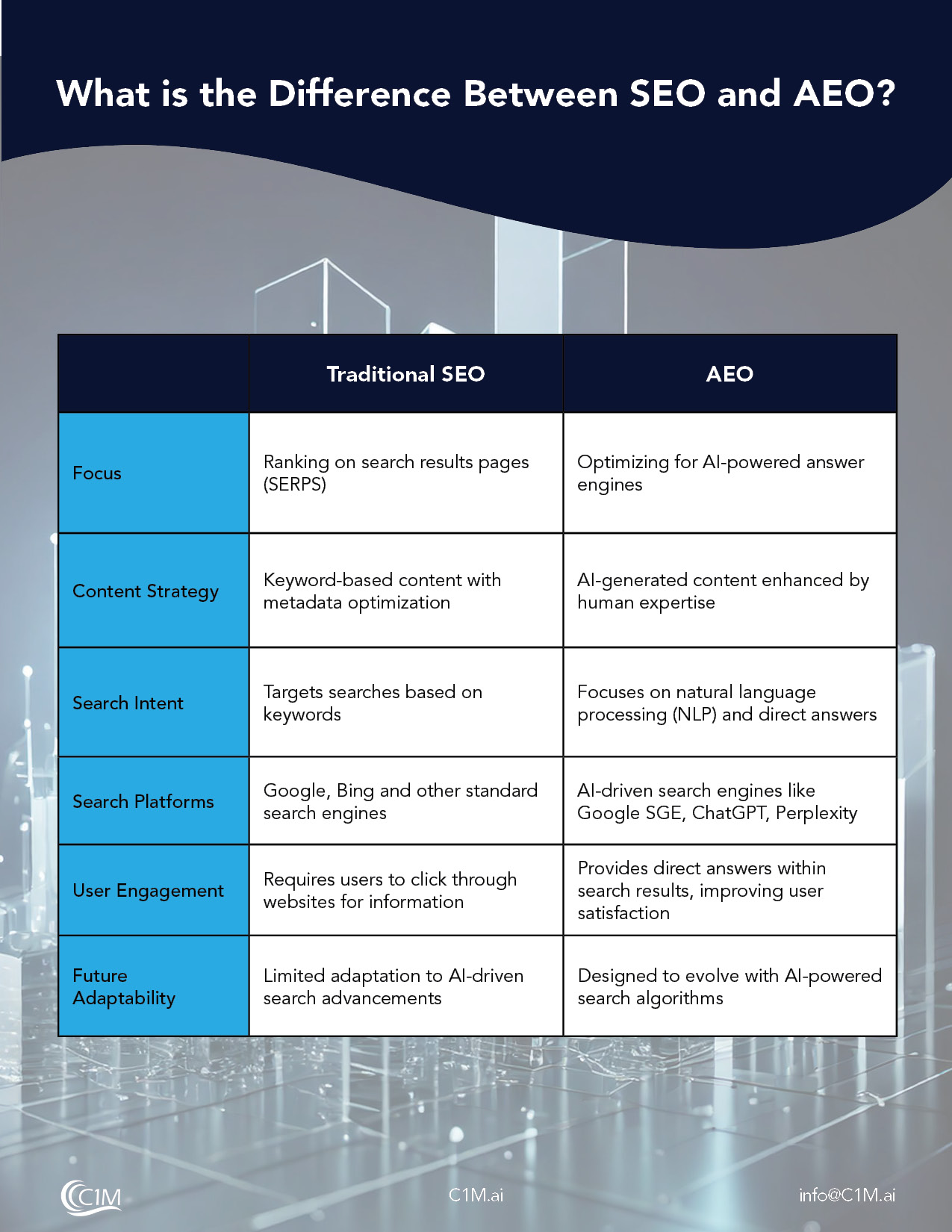
Ecommerce SEO is a neglected art for many businesses. This is despite the fact that it has the highest ROI of any ecommerce marketing campaign. Sure, you can pay for ads that drive prospects to your online store. But that’s an expensive strategy over the long-term. Why not invest time instead into a comprehensive and thoughtful ecommerce SEO strategy? Your ecommerce business will benefit.
SEO for Retail – Understanding Ecommerce SEO
Ecommerce is a rapidly growing form of retail. Americans are increasingly used to purchasing a huge variety of products and services online. And that trend is only going to grow more quickly in the next few years.
The popularity of online stores means that as a business owner, you cannot afford to ignore ecommerce. This is true for almost every single industry. But this popularity also comes with a downside – getting your Ecommerce store found by potential customers is also getting more difficult as the marketplace gets increasingly crowded. It’s getting harder to stand out in the growing crowd of Ecommerce websites.
You need a strategy to be found by people who are interested in purchasing your products or services.
If you’re relying on paid ads or social media networks to get people to your ecommerce store, that can work well. But it also requires a constant stream of money, and it’s a lot of consistent work too. Eating up both your time and money isn’t a good long-term strategy for growing your business.
When you invest in your ecommerce SEO strategy, on the other hand, you’ll certainly put in plenty of effort up-front. But once your strategy is running, you’ll see consistently growing results with almost no additional time invested. And it’s all free because it’s based on organic search traffic.
What is Ecommerce SEO?
Ecommerce SEO is a targeted form of search engine optimization. Search engine optimization, if you’re new to the term, is the art of optimizing your web content around keywords to rank higher in search engines like Google or Bing. SEO can be used to boost your website, your content, your social media, and of course, your online store.
Ecommerce SEO is specifically getting your ecommerce website to rank in organic, or unpaid, search results. This is a great way of getting customers in the virtual door, because search is the most common way online stores are found in most industries. Think about your own online shopping process – you likely use Google to search for research about products or services that interest you, and to find companies that offer what you’re looking to purchase. A huge number of people go through the same process every day, making search results a valuable resource for your store.
Creating an SEO Strategy for Ecommerce Website
What goes into making your ecommerce site optimized for search engines and their users? We’ll get into more details below, but it’s about a few simple guidelines. Making your website and store look and perform professionally and consistently, with attractive pictures and thorough product descriptions. And making your products or services easy to purchase online, with plenty of customer reviews to provide proof that your company is trustworthy.
By following the steps below, you can create an effective ecommerce SEO campaign and start seeing measurable results that grow your business over time.
Ecommerce Keyword Research
The first step in any SEO strategy is performing keyword research. But keyword research for ecommerce SEO is a little different than general keyword research. This is because you need to account for buyer intent when researching ecommerce keywords.
Buyer intent is how far along a prospect is in making their decision to buy a product or service. In general, the more broad a search term is, the less immediate buyer intent a search engine user has. If someone is searching Google for the term “desk chair,” they’re likely just doing general research about desk chairs. Maybe they’re just idly looking around, or maybe they’re planning for a purchase sometime in the future. Either way, they’re not usually about to make a purchase today.
SEO and Ecommerce Marketing
But if a user is searching for “Herman Miller Aeron desk chair,” they’re almost certainly searching for a place online to purchase that specific chair. They know what they want, and they just need a place to buy it. If you’re selling desk chairs you want to be found for the second and specific search term because a greater number of those searchers will convert to customers today.
How do you find these effective keywords? You have a few options for keyword research. One of the most effective ways to find ecommerce keywords is by looking on Amazon for search terms. After all, people go on Amazon because they’re looking to make a purchase – they all have buyer intent. So finding what they’re searching for yields high buyer intent keywords.
Start by putting your seed keyword (your most general description of your product into the Amazon Search function and see what related terms come up below it in the auto fill of suggested terms. Always keep your keyword ideas in a spreadsheet so you can keep track of them. If you have a lot of products for sale, you may want to use the Amazon Keyword Tool to make the process faster. Finding long-tail keywords (keywords with 4 or more words) can give you some traffic with less competition, so don’t ignore those more specific terms.
You can also find ecommerce keywords by looking at what your competitors are doing. If you have competitors who rank more highly than you in search results, you can use their site to get keyword ideas. Check out the product descriptions and product categories pages on their ecommerce websites to see if they have used any targeted keywords your site is missing. The idea isn’t to copy them directly but to use their sites for keyword inspiration.
Evaluate Your Keywords
Once you have your keyword ideas you’ve gleaned from Amazon and your competitors, it’s time to see if those keywords are high-quality. You can do this by checking out the ideas in your keyword spreadsheet in the Google Keyword Planner, which will give you the search volume for each term.
You can use the CPC (cost-per-click) on each keyword to get a rough idea of buyer intent too. Keywords that cost more are usually ones that convert better, which is why their price is higher. If you find some keywords that have high search volume and a higher CPC? You can rate those highly and move on to the next step.
Build Your Ecommerce Site Architecture
As with all forms of SEO, Google and its competitors rank sites based on what’s in the code behind the content, not just the content itself. Search engines only want to send their users to ecommerce sites that are well-designed, easy to use, and that provide a good customer experience. This is why it’s critical that your website is designed with the end user in mind.
How can you improve the customer experience on your site? Make sure it doesn’t take more than three clicks to get to any page – more than that will frustrate customers. Make sure the process of making a purchase – adding items to a shopping cart, checking out, and getting a confirmation – is simple and free of glitches. And always make sure your target keywords are distributed throughout your site – you spent all that time doing the research, so don’t let them go to waste.
On Page SEO for Ecommerce Website
Let’s talk about that last point – using your keywords wisely across your ecommerce website. On-page SEO is, simply, search engine optimization for the pages that are actually on your website. For your ecommerce site, this means putting keywords on all relevant pages.
Product Category Pages
The most important place to ensure you’re putting targeted keywords is on your product category pages. This is because if a search engine user finds a category page, they can immediately see all products in that category. If you’re not optimizing your product category pages, you’re missing out on that traffic.
How can you optimize your category pages? First, ensure the URL of the page is short and contains your primary keyword. The title tag (which is the H1 header) on the page should also contain that primary keyword. And finally, in the copy of the page itself. Many ecommerce businesses don’t have any copy on their category pages, which is a mistake. Your page copy should be about 300 words and it should contain your primary keyword about three times. But be careful not to stuff the text awkwardly with keywords – it should flow naturally.
You should also be sure to include alt text in your images on your category pages. These image descriptions, which tell search engines what your photos contain, can help boost your search rankings even more. But as always, be sure not to just stuff the alt text with keywords. Incorporate a keyword naturally in the description instead.
Product Pages
Optimizing the content on your product pages is also important to help search engine users find what your store sells. Two critical things to make sure each page contains SEO writing that provides thorough product descriptions and customer reviews.
Product descriptions should be on the longer side for most companies – aim for 1,000 words, if possible. Google prioritizes longer content in searches so this will help you rank higher. If that is excessive for the products you sell (as every industry is different), aim for at least 500 words. And of course, include your target keywords in that content.
You shouldn’t just include your primary keyword in your intro content – you’ll also want to add related keywords that are just a little different from your primary one. That way if search engine users are looking for a product like yours but using a slightly different wording than your primary keyword, you can still be found.
Customer reviews are important to include for a few reasons. They help your visitors and potential customers make an informed purchasing decision. Hearing from customers that are just like them also increases the trust in your product – if you’re willing to let people post honest feedback, then your product is usually high quality and you stand behind it.
And a little-known benefit of customer reviews on your product pages? They also contribute to your search engine rankings. This might not be obvious at first, but it makes sense. Customer reviews usually talk about the item they bought, adding your keywords in for you naturally. If you’re selling little black dresses and you have 100 customer reviews on a page saying “This is the perfect little black dress!” search engine algorithms will take that into account.
Technical SEO for Ecommerce
What’s behind your content is just as important as the copy on your page for SEO purposes. These are very similar to the best practices for general SEO. You need to include meta descriptions for each page, giving search engine users a preview of what’s on each page from the search site itself. You need to be sure your pages load quickly without being slowed down by images that are too large (use online tools to compress them if your pages take more than three seconds to load). And you need to be sure your site is mobile-friendly as more people than ever shop from their mobile devices.
The basics of technical SEO, for ecommerce SEO and other sites too, are really about creating a great user experience. Google wants to deliver great content to its users so they keep coming back to it as a search engine, so that means pointing them to sites that answer their needs and don’t provide only frustration. Slow load times and a bad mobile experience provide a bad experience for users. Not only will you lose out on those sales, you’ll also lose out on those very essential search rankings. It’s well worth taking the time to get these pieces right for your whole website.
Content Marketing for Ecommerce
It might not seem immediately obvious why your ecommerce store needs a content marketing strategy. After all, you’re trying to sell products – why do you need to write a blog to do that? But content marketing is a powerful tool for every business owner who is trying to market something, whether that’s an online store or a service.
Why? Because you can only write so much content for your product pages and categories. Every piece of content you can write is an opportunity to use keywords and rise in the search engine rankings. Creating fresh blog content gives you additional chances to gain more search real estate.
Consumers also usually like to do some research before they make a purchase. If they can find your website and read the informative and engaging content you’ve written about your products and your industry, they will build trust in you as an authority. This makes them more likely to choose you as they make their final purchase decision. Content marketing allows you to answer any questions they might have, and talk through any common pain points or purchase hesitation without hiring a single sales employee.
Just make sure your content is relevant and well-written and free of errors before you publish it. Having error-riddled content on your site can detract from your efforts to be seen as an authority and a trusted product provider.
Measuring Your Success
Once your ecommerce SEO strategy is in place using all the above tips, your work isn’t done quite yet. You’ve just spent all this time getting your site just right – don’t let that investment go to waste.
You need to measure your success by tracking your search ranking progress in a tool like Google Search Console or Google Analytics. SEO is a long-term game – you can’t expect to see huge gains right away for more sites. But track your progress over time and keep looking at what’s working well on your site and what’s not. You should always be willing to tweak a page or redesign a category to keep growing your results.
Experience the Best SEO Ecommerce with C1M
Ecommerce SEO can be time-consuming and tricky to get just right. And if you’re a busy business owner, you might not have the time to invest in a thorough ecommerce SEO strategy by yourself. That’s when you should contact C1M today to schedule your free business review. We can help you with everything from setting up the SEO basics to creating a detailed content marketing strategy to bring in new customers.







